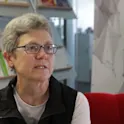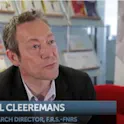
Life sciences
15 Dec 2015
A travel through Biochemistry and beyond: from textbooks to Mount Everest
An interview with Michele Samaja, Associate Professor in Biochemistry at the University of Milan and Guest Associate Editor for Frontiers in Pediatrics. Before falling in love with Biochemistry, Professor Michele Samaja was about to leave the university after only one year. “After the classical courses in Chemistry, Physics, Organic Chemistry, Microbiology etc., I was rather discouraged by the tedious and repetitive teachings and textbooks,” he said, “I even started practicing as a TV-cameraman and as a downhill ski instructor.” Then, he finally incurred the right course. Needless to say, it was a course of Biochemistry. “Eventually I became increasingly stimulated in getting more and more insight in what appeared to me a young discipline with high impact in every biomedical branch.” Today Michele Samaja is an Associate Professor in Biochemistry at the University of Milan, and this discipline led him to interact with different kinds of scientists (from physiologists to hematologists, pathologists, pharmacologists and immunologists), with lots of young PhD students and even with Sherpas from Nepal. What’s the main focus of your current research? The “genetic” imprinting that is leading my past and current research was given by a unique opportunity I had just after graduating, when I […]













